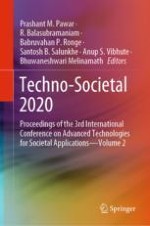This book, divided in two volumes, originates from Techno-Societal 2020: the 3rd International Conference on Advanced Technologies for Societal Applications, Maharashtra, India, that brings together faculty members of various engineering colleges to solve Indian regional relevant problems under the guidance of eminent researchers from various reputed organizations.
The focus of this volume is on technologies that help develop and improve society, in particular on issues such as advanced and sustainable technologies for manufacturing processes, environment, livelihood, rural employment, agriculture, energy, transport, sanitation, water, education.
This conference aims to help innovators to share their best practices or products developed to solve specific local problems which in turn may help the other researchers to take inspiration to solve problems in their region. On the other hand, technologies proposed by expert researchers may find applications in different regions. This offers a multidisciplinary platform for researchers from a broad range of disciplines of Science, Engineering and Technology for reporting innovations at different levels.
